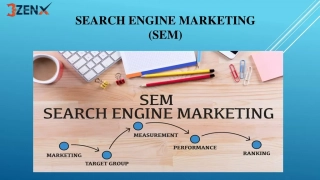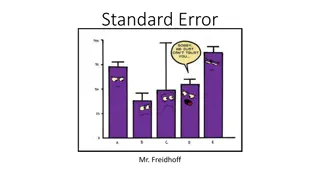DEPARTMENT OF ECONOMICS WECOME SYBA STUDENTS (Sem-III) 2020-21
Public Finance covers public vs private finance, market failure, principles of sound finance, fiscal policy aspects like budgeting, taxation, public expenditure, debt, and Indian public finance specifics.
Download Presentation

Please find below an Image/Link to download the presentation.
The content on the website is provided AS IS for your information and personal use only. It may not be sold, licensed, or shared on other websites without obtaining consent from the author.If you encounter any issues during the download, it is possible that the publisher has removed the file from their server.
You are allowed to download the files provided on this website for personal or commercial use, subject to the condition that they are used lawfully. All files are the property of their respective owners.
The content on the website is provided AS IS for your information and personal use only. It may not be sold, licensed, or shared on other websites without obtaining consent from the author.
E N D
Presentation Transcript
1 SHETH NKTT COLLEGE OF COMMERCE & SHETH JTT COLLEGE OF ARTS, THANE DEPARTMENT OF ECONOMICS WECOME SYBA STUDENTS (Sem-III) 2020-21 AT ONLINE LECTURE ON ECONOMICS-IV (PUBLIC FINANCE) BY DR DHANASHREE SAWANT, ASSOCIATE PROFESSOR, DEPT OF ECONOMICS
2 Syllabus of Economics-IV (SEM-III) Unit I Introduction Meaning and Scope of Public Finance; Public Finance versus Private Finance; Market Failure: Public Goods and Private Goods, Externalities, Efficiency versus Equity; Principles of Sound Finance and Functional Finance; Allocation, Distribution, Stabilisation and Growth Functions of the Government Unit - II Fiscal Policy: Budget and Taxation Dalton s and Musgrave Versions of the Law of Maximum Social Advantage; Role of Government in a Modern Economy; Types of Public Budget; Structure of Public Budget; Role of Taxation; Merits and Demerits of Direct and Indirect Tax Policy; Features of Good Tax System; Concept of Impact, Incidence and Shifting of Taxation; Elasticity and Determination of Tax Burden Unit III Fiscal Policy: Public Expenditure and Debt Canons of Public Expenditure; Classification of Public Expenditure; Wagner s Law of Public Expenditure; Public Expenditure as an Instrument of Fiscal Policy; Meaning and Types of Public Debt; Burden of Public Debt; Principles of Public Debt Management; Concepts of Deficits Unit IV Indian Public Finance Budget of The Government of India (Previous Financial Year); Sources of Public Receipts (Tax and Non-Tax, Introduction To GST); Components of Public Expenditure; Sources of Public Borrowing and Debt Liabilities; Deficits; Appraisal of FRBM Act 2004; Fiscal Federalism: Fourteenth Finance Commission Recommendations prepared by Dr D P Sawant, Asso Prof, Dept of Economics, Sheth NKTT College 3/9/2025
Public Finance- Module-I 3 MEANING, NEED FOR, FUNCTIONS AND SCOPE OF PUBLIC FINANCE PUBLIC FINANCE VERSUS PRIVATE FINANCE MARKET FAILURE: MEANING, CAUSES AND SOLUTIONS PUBLIC GOODS AND PRIVATE GOODS EXTERNALITIES EFFICIENCY VERSUS EQUITY PRINCIPLES OF SOUND FINANCE AND FUNCTIONAL FINANCE ALLOCATION, DISTRIBUTION, STABILISATION AND GROWTH FUNCTIONS OF THE GOVERNMENT
4 What is Public finance? According to Dalton, Public Finance is concerned with income and expenditure of public authorities and with the adjustment of one to the other prepared by Dr D P Sawant, Asso Prof, Dept of Economics, Sheth NKTT College 3/9/2025
5 Need to study the Public finance Importance of Public finance in developing countries- Helps in reducing income inequalities Helps in stabilizing the economy Helps in controlling inflation and deflation Help in the development of infrastructure facilities, like roads, railways, communication means, health and education facilities Promotion of Exports, which helps to earn foreign exchange It promotes saving and investment in the country Efficient allocation of resources. More taxes on unhealthy goods and services. It helps in balanced development. It helps in the reduction of rural-urban imbalance; as well as agriculture-industry imbalance, through its policies. prepared by Dr D P Sawant, Asso Prof, Dept of Economics, Sheth NKTT College 3/9/2025
6 Scope of Public Finance Public revenue it is the income of the government, such as taxes and non-taxes, such as, fees, rent, fines, donations and grants etc. ii. Public Expenditure it is the expenditure of the government, such as infrastructure, defense, health, education etc. iii. Public debt it is the borrowing taken by the government bodies when government revenue falls short of government expenditure. It is of two types, internal debt and external debt iv. Financial administration it is related to the administration of all public finance i.e. public revenue, public expenditure, and public debt. It includes preparation, passing, and implementation of government budget. It studies the policy impact on the social- economic environment, inter-governmental relationships, foreign relationships, etc. i. prepared by Dr D P Sawant, Asso Prof, Dept of Economics, Sheth NKTT College 3/9/2025
7 Functions of Public Finance Allocation Function this refers to the allocation of money on various sectors, such as education, defense, health, transport & communication, administration etc. ii. Distribution Function this is mainly undertaken for the reduction of income inequalities among the population. For instance, government follows Progressive taxation, wherein more taxes are imposed on the rich and giving subsidies to the poor. Higher taxes on luxury goods and subsidized education, health care and housing to the poor. iii. Stabilization Function each country faces prosperity and recession in its economic activities. The government of a country tries to stabilize the economy through different policies. For example, during recession, it follows deficit budgeting, whereas, during prosperity, the government may follow surplus budgeting. i. prepared by Dr D P Sawant, Asso Prof, Dept of Economics, Sheth NKTT College 3/9/2025
8 Public Finance versus Private Finance S r n o 1Meaning Point Public finance Private finance Study of income and expenditure of the government Study of income and expenditure of private individuals or companies Satisfaction of wants of all people in the economy 2Similarities Tries to attain balance between income and expenditure Both face the problem of gap between income and expenditure, so both need to borrow money 3Objective Satisfaction of personal wants 4Determination expenditure 5Unavoidable expenditure of Expenditure is determined first and accordingly tries to get revenue Income is determined first and accordingly expenditure is undertaken The government cannot avoid expenditure on defense, subsidies etc Individuals can avoid unnecessary expenditure 6Nature of Budget 7Nature of resources 8Main motive 9Long-term/ short-term mostly deficit budget Unlimited resources Public welfare Long-term considerations due to objective of public welfare Has to be surplus budget Limited resources Profit maximization Short-term considerations or objective of quick returns on investment Private individuals cannot make the people buy their products or invest in their companies Budget is confidential Compulsive/voluntary methods Transparency of budget 1 0 Government follow compulsive methods, such as tax payment is compulsory Full transparency of government budget 1 1 prepared by Dr D P Sawant, Asso Prof, Dept of Economics, Sheth NKTT College 3/9/2025
9 Market Failure Meaning: It refers to inefficient distribution of goods and services in a free market. price of a good is determined by its supply and demand forces. Market failure occurs due to disturbance in market forces, leading to disequilibrium. In other words, the demand for the good is not equal to its supply. The distortions in market, may be in the forms of monopoly power, price limit, minimum wage requirement or government regulations. prepared by Dr D P Sawant, Asso Prof, Dept of Economics, Sheth NKTT College 3/9/2025
Causes of Market Failure 10 Externality it is the either cost or benefit resulting from the transactions between two parties, borne by the third party who are not involved in the actual production process. Public Goods since public goods, such as, roads, railways are non-excludable and non-rivalrous Market Control monopoly power or existence of oligopoly market, control the supply and price of the product. Imperfect information of the market to buyers and sellers due to lack of information about the price of the product, the buyers my pay higher price Solutions for Market Failure are in the forms of price mechanism, legislations to control the use of cigarettes, liquor etc. market information can be accurately published. prepared by Dr D P Sawant, Asso Prof, Dept of Economics, Sheth NKTT College 3/9/2025
11 Difference between Public Good and Private Good Sr no 1 Point Public good Private good Meaning It is consumed by all people simultaneously It is non excludable No rivalry in consumption Education in municipal school Roadways, railways, public health center, public garden defense etc Free-rider problem Less interest to pay for the price It individuals who buy it It is excludable Rivalry in consumption Education in private school Food, clothes house, car etc. is consumed by the Feature Feature Example Examples 2 3 4 5 Problem Price 6 7 No free rider problem People who buy have to pay the price of the good prepared by Dr D P Sawant, Asso Prof, Dept of Economics, Sheth NKTT College 3/9/2025
12 Externalities It is the either cost or benefit resulting from the transactions between two parties, borne by the third party who are not involved in the actual production process. Externality can be negative or positive. For example, Positive Externality: public education mainly benefits the students, but, has its spillover effects on the entire society. Negative externality is the negative effects on the society, such as, all types of pollution caused by the industries, transport vehicles etc. Public goods have positive externalities, like police protection, health funding, education etc. An externality exists if some of the variables which affect one decision-maker s utility or profit are under the control of another decision-maker prepared by Dr D P Sawant, Asso Prof, Dept of Economics, Sheth NKTT College 3/9/2025
13 Efficiency and equity trade off Efficiency implies that the society is getting maximum benefits from scarce resources, whereas, equity means the benefits are distributed equally among the members of the society. Efficiency is concerned with optimal production and allocation of resources, whereas, equity is related to how the resources are distributed equally among the members of the society. Pareto efficiency is concerned with the creating of the situation where one cannot be made better off without making other one worse off. For example when the resources are used to produce more of defense goods, efficiency is attained, however, it may create inequality because less resources will be available for the production of food items. So the poor will be starved. prepared by Dr D P Sawant, Asso Prof, Dept of Economics, Sheth NKTT College 3/9/2025
14 Sound Finance and Functional Finance Sound finance, as current thinking tells us, calls for a balanced budget, that is for the cash flow of incoming tax receipts to match that of program expenditures. Even better, it is said, a surplus of tax receipts should be shown. The term "sound finance" is used in the banking industry to recognize efficiencies existing within a program. This might refer to a government or a community project, for example. Assets must be utilized most sensibly so as to ensure the best possible outcome so as to limit growth of associated liabilities. prepared by Dr D P Sawant, Asso Prof, Dept of Economics, Sheth NKTT College 3/9/2025
15 Characteristics of a Sound Finance Simplicity: A sound financial structure should provide simple financial structure which could be managed easily and understandable even to a layman. Simplicity is sine qua non (essential condition) which helps the promoters and the management in acquiring the required amount of capital. It is also easy to work out a simple financial plan. Foresight: Foresight must be used in planning the scope of operation in order that the needs for capital may be estimated as accurately as possible. A plan visualised without foresight spells disaster for the company, if it fails to meet the needs for both fixed and working capital. In simple words, the canon of foresight means that besides the needs of today the requirements of tomorrow should also be kept in view. Flexibility: Financial readjustments become necessary often. The financial plan must be easily adaptable to them. There should be a degree of flexibility so that financial plan can be adopted with a minimum of delay to meet changing conditions in the future. Optimum use of funds:Capital should not only be adequate but should also be productively employed. Financial plan should prevent wasteful use of capital, avoid idle capacity and ensure proper utilisation of funds to build up earning capacity of the enterprise. 1. 2. 3. 4. prepared by Dr D P Sawant, Asso Prof, Dept of Economics, Sheth NKTT College 3/9/2025
16 Characteristics of a sound finance 5. Liquidity: It means that a reasonable percentage of the current assets must be kept in the form of liquid cash. Cash is required to finance purchases, to pay salaries, wages and other incidental expenses. The degree of liquidity to be maintained is determined by the size of the company, its age, its credit status, the nature of its operations, the rate of turnover etc. 6. Anticipation of contingencies The planners should visualise contingencies or emergency situations in designing their financial plan. This may lead to keeping of some surplus capital for meeting the unforeseen events. It would be better if these contingencies are anticipated in advance 7. Economy: Last but not the least, the financial open be made in such a manner that the cost of capital procurement should be minimum. The capital mobilised should not impose disproportionate burden on the company. The fixed dividend on preference shares, the interest on loans and debentures should be related to the earning capacity. The fixed interest payments should not reduce the profits of the company and hamper its sustained growth. prepared by Dr D P Sawant, Asso Prof, Dept of Economics, Sheth NKTT College 3/9/2025
17 Functional Finance It states that government should finance itself to meet explicit goals, such as taming the business cycle, achieving full employment, ensuring growth, and low inflation. This refers to an economic theory which hopes to put an end to business cycles through appropriate government policy. It was developed by British economist Abba P. Lerner during the Second World War. prepared by Dr D P Sawant, Asso Prof, Dept of Economics, Sheth NKTT College 3/9/2025
Principles of Functional Finance 18 Governments have to intervene in the national and global economy; these economies are not self- regulating. The principal economic objective of the state should be to ensure a prosperous economy. 3. Money is a creature of the state; it has to be managed. 4. Fiscal policy should be directed in light of its impact on the economy, and the budget should be managed accordingly, that is, 'balancing revenue and spending' is not important; prosperity is important. 5. The amount and pace of government spending should be set in light of the desired level of activity, and taxes should be levied for their economic impact, rather than to raise revenue. 1. 2. 6. Principles of 'sound finance' apply to individuals. They make sense for individuals, households, businesses, and non-sovereign governments (such as cities and individual US states) but do not apply to the governments of sovereign states, capable of issuing money prepared by Dr D P Sawant, Asso Prof, Dept of Economics, Sheth NKTT College 3/9/2025
19 Three rules to be followed by the Government The government shall maintain a reasonable level of demand at all times. If there is too little spending and, thus, excessive unemployment, the government shall reduce taxes or increase its own spending. If there is too much spending, the government shall prevent inflation by reducing its own expenditures or by increasing taxes. By borrowing money when it wishes to raise the rate of interest and by lending money or repaying debt when it wishes to lower the rate of interest, the government shall maintain that rate of interest that induces the optimum amount of investment. If either of the first two rules conflicts with principles of 'sound finance' or of balancing the budget, or of limiting the national debt, so much the worse for these principles. The government press shall print any money that may be needed to carry out rules 1 and 2. 1. 2. 3. prepared by Dr D P Sawant, Asso Prof, Dept of Economics, Sheth NKTT College 3/9/2025
20 True or False Public finance is the study of financial activities of the private business firms.-False A study of Public finance helps in reducing income inequalities in developing countries.- True Private Finance is concerned with income and expenditure of public authorities and with the adjustment of one to the other. -False 4. Public revenue is the income of the government, such as taxes and non-taxes, such as, fees, rent, fines, donations and grants etc. True 5. Public Expenditure is the expenditure of the people of the country. -False. 6. Public debt is the borrowing taken by the government bodies when government revenue falls short of government expenditure. -True. 1. 2. 3. prepared by Dr D P Sawant, Asso Prof, Dept of Economics, Sheth NKTT College 3/9/2025
21 True or false Externality is the either cost or benefit resulting from the transactions between two parties. True. Externality is always negative. False Private goods are non-excludable and non-rivalrous. -False Sound Finance calls for a Balanced Budget.-True 5. There can be deficit budget as per the principle of Functional Finance. -True 6. Efficiency implies that the society is getting maximum benefits from scarce resources. - True 1. 2. 3. 4. prepared by Dr D P Sawant, Asso Prof, Dept of Economics, Sheth NKTT College 3/9/2025
22 True or False Allocation Function of the public finance does not include the allocation of money on various sectors, such as education, defense and health. -False Distribution Function is mainly undertaken for the reduction of income inequalities among the population. -True. Public finance the study of income and expenditure of private individuals or companies. False Public Finance and Private Finance, both face the problem of gap between income and expenditure, so both need to borrow money. - True In case of Private Finance, expenditure is determined first and accordingly tries to get revenue. False Market failure refers to inefficient distribution of goods and services in a free market. True 1. 2. 3. 4. 5. 6. prepared by Dr D P Sawant, Asso Prof, Dept of Economics, Sheth NKTT College 3/9/2025
23 Match the Columns Sr No Group A Sr. No A Group B 1 Public Finance Private Finance Market Failure Positive Externality Negative Externality Public good Education in private school Education in municipal school Air pollution Surplus or Deficit budget Balanced budget Spill over effects of garden near industry 2 B 3 C 4 D 5 E 6 F 7 G Private good Sound Finance Functional Finance Pareto efficiency Study of financial activities of Government Inefficiency one cannot be made better off without making other worse off Study of financial activities of individual firms 8 H 9 10 I j prepared by Dr D P Sawant, Asso Prof, Dept of Economics, Sheth NKTT College 3/9/2025
24 Questions Discuss the meaning and scope of Public Finance. Distinguish between Public Finance and Private Finance. Write a note on: i) Market Failure , ii) Externalities Distinguish between Public Goods and Private Goods. Discuss on the Efficiency versus Equity. 1. 2. 3. 4. 5. Explain the concepts of Sound Finance and Functional Finance. 6. Discuss the features of Sound Finance. 7. Explain the Principles of Functional Finance. 8. prepared by Dr D P Sawant, Asso Prof, Dept of Economics, Sheth NKTT College 3/9/2025
25 References: 1. J. Hindriks, G. Myles, (2006), Intermediate Public Economics, MIT Press. 2. Harvey Rosen, (2005), Public Finance, Seventh Edition, McGraw Hill Publications. 3. KaushikBasu and Maertens (ed), (2013), The New Oxford Companion to Economics in India, Oxford University Press. 4. Sury M.M., (1990), Government Budgeting in India, Commonwealth Publishers. 5. Bhatia H.L., (2012), Public Finance, Vikas Publications. 6. Report of the Fourteenth Finance Commission, Government of India. prepared by Dr D P Sawant, Asso Prof, Dept of Economics, Sheth NKTT College 3/9/2025
26 Thank you all .. General Instructions: 1. Please join the session 5 minutes prior of the scheduled time 2. keep your mobile, tab, PC or laptop on MUTE mode 3. ask questions at the end of session or beginning of next session 4. write your doubts in chat box or write your doubts on a paper 5. your attendance will be recorded and maintained by the college 6. practice the questions given to you at home 7. periodic online tests will be taken for consistent evaluation prepared by Dr D P Sawant, Asso Prof, Dept of Economics, Sheth NKTT College 3/9/2025
27 Assignment Meanings of following along with example 1. Market Failure 2. Efficiency 3. Equity 4. Sound Finance 6. Functional Finance prepared by Dr D P Sawant, Asso Prof, Dept of Economics, Sheth NKTT College 3/9/2025























